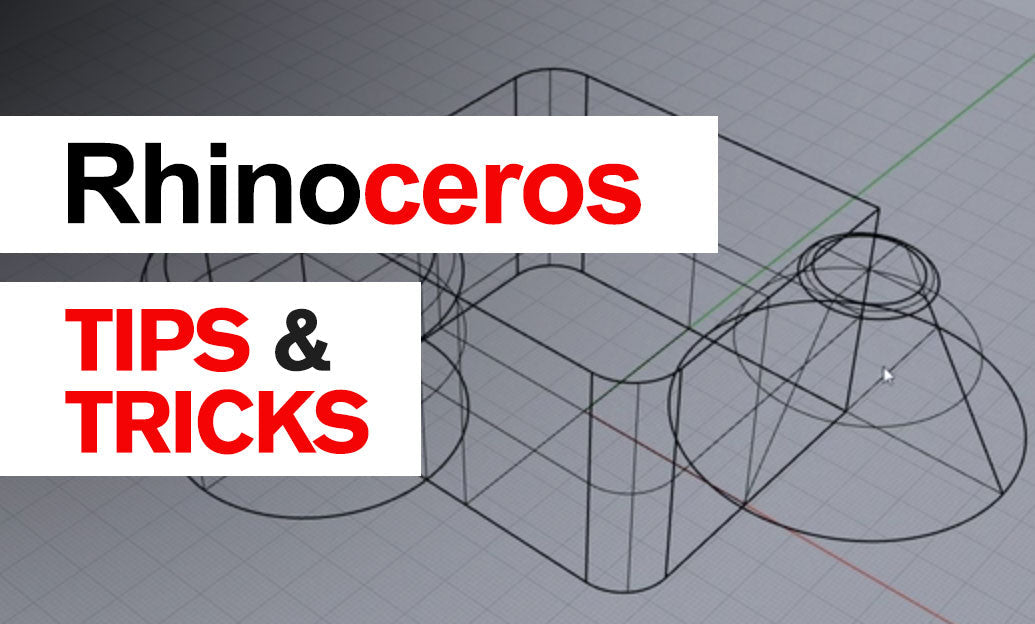Your Cart is Empty
Customer Testimonials
-
"Great customer service. The folks at Novedge were super helpful in navigating a somewhat complicated order including software upgrades and serial numbers in various stages of inactivity. They were friendly and helpful throughout the process.."
Ruben Ruckmark
"Quick & very helpful. We have been using Novedge for years and are very happy with their quick service when we need to make a purchase and excellent support resolving any issues."
Will Woodson
"Scott is the best. He reminds me about subscriptions dates, guides me in the correct direction for updates. He always responds promptly to me. He is literally the reason I continue to work with Novedge and will do so in the future."
Edward Mchugh
"Calvin Lok is “the man”. After my purchase of Sketchup 2021, he called me and provided step-by-step instructions to ease me through difficulties I was having with the setup of my new software."
Mike Borzage
Rhino 3D Tip: Optimizing Import and Export Workflows in Rhino 3D
October 27, 2025 3 min read

Importing and exporting file formats in Rhino 3D is a key skill for working seamlessly across multiple design applications. Whether you need to collaborate with CAD specialists or bring data into rendering software, understanding your export options can help ensure a smooth transition from one tool to another. It’s always wise to familiarize yourself with the various file types you can handle in Rhino, as each format serves a unique purpose. Below are a few suggestions to maximize your workflow efficiency and help maintain geometric integrity.
- Choose the Right Format: Before you export, consider what your downstream workflow requires. If you need precise geometry for manufacturing, a format like STEP or IGES might be ideal. For visualization or 3D printing, STL or OBJ files may be more suitable.
- Check Tolerances: Exporting with incorrect tolerances can result in gaps or misalignments. Ensure your model tolerance (found in Rhino’s Document Properties) aligns with the requirements of the receiving software.
- Manage Units Carefully: When importing or exporting, confirm that units match. A mismatch in metric or imperial units can lead to costly scaling errors, especially if you’re collaborating with colleagues in different regions.
- Use Layers and Groups: Organize your objects in Rhino before exporting. Many formats preserve layer structure, which can make editing or manipulation much easier for anyone opening the file in another program.
- Mesh Settings: For mesh-based formats (like STL), pay attention to mesh density. A denser mesh may capture details more accurately but can create large file sizes. Strike a balance that meets both quality and manageability.
- Check Compatibility: Some specialized applications require custom import plugins or exact versions of certain file types. If you’re unsure, consult the documentation of the receiving software to determine the best format and settings.
When importing files from another platform, watch for potential issues such as overlapping surfaces or geometry that has been repositioned. It’s often helpful to run a quick check in Rhino using commands like SelBadObjects or adjusting ShowEdges to detect problematic areas. If you encounter error messages when reading in a file, consider alternative import paths, such as converting the file to another format or adjusting export settings in the original software. To stay up to date on new capabilities, keep an eye on Rhino’s release notes and updates, as changes in import/export libraries may open up new workflow options.
Once your files are properly exported, testing them in the target application is essential. A few trial runs can confirm that your geometry is preserved, your surfaces are intact, and all critical details remain accurate. If you encounter discrepancies, compare the results to the original Rhino model, and adjust your export settings as needed. Over time, you’ll develop a set of optimal settings for the file types you use most frequently, saving you the hassle of reconfiguration on each project.
If you need specialized plugins or additional file handling solutions, you can explore countless Rhino add-ons at NOVEDGE. Their offerings can help expand Rhino’s native import/export capabilities and streamline your design workflow. Each plugin often caters to specific industries, from architecture to product design, unlocking powerful automation tools or advanced file management features.
As you refine your approach to importing and exporting, remember that a clean, well-structured model in Rhino usually leads to the best outcomes. Whether you’re sending files to teammates, preparing for CNC machining, or integrating with external rendering solutions, taking the time to understand file formats, tolerances, and settings can dramatically improve project collaboration. Whenever you look to push those boundaries even further, check the latest solutions from NOVEDGE for plugins that might simplify your data exchange process even more.
You can find all the Rhino products on the NOVEDGE web site at this page.
Also in Design News

Cinema 4D Tip: Enhancing Volumetric Effects in Cinema 4D with PyroCluster Techniques
October 28, 2025 3 min read
Read More
Bluebeam Tip: Enhance PDF Navigation and Management with Bluebeam Revu's Thumbnails Panel
October 28, 2025 2 min read
Read MoreSubscribe
Sign up to get the latest on sales, new releases and more …



